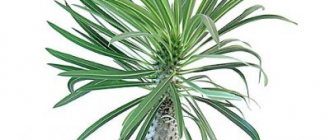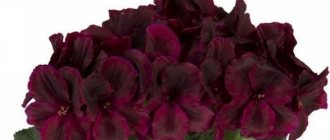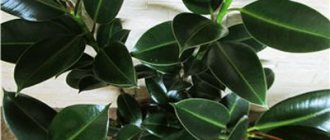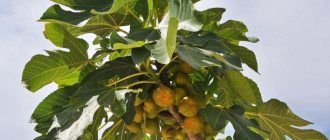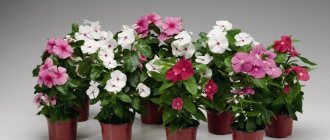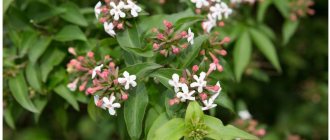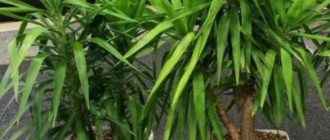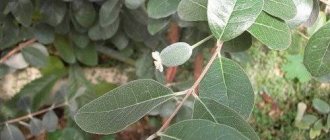Lighting and temperature
If you want to get fruits, then you need to arrange additional lighting. The banana palm tree should be illuminated for at least 12 hours during the day, and the air temperature in the house during the day should be maintained at twenty-five degrees or more. At night, conditions may be colder, but the temperature should not drop below 20 degrees Celsius. This is what fruiting is all about.
To grow a banana palm for decorative purposes, room temperature will be enough, and it does not need additional lighting at all. The plant will bloom without it, beautifully and for a long time. But since the banana comes from warm countries, temperatures below 16 degrees C can slow down its growth.
Description of banana for home cultivation
Growing a banana tree at home is a doable task. Many gardeners make the mistake of imagining a banana as a palm tree. Culture (in Latin Musaceae) is a herbaceous perennial from the banana family.
The etymology of the Latin word is not known for certain. According to one version, the name comes from Anthony Muse, the court physician of the Roman emperor. Proponents of another theory claim that the lexeme has Arabic roots.
Banana fruits are not fruits, but berries. The banana trunk is located underground and serves as a root. The above-ground part is the foliage, which fits tightly together and forms a pseudostem. Leaf color is determined by the variety. It can be two-colored, green or spotted with inclusions.
The rhizome, or spherical stem, hides underground and replaces the rhizome of the tree. The main inflorescence emerges from the middle part of the pseudostem and dries after fruiting.
The life cycle is limited to 40 years. If plants are bred for industry, planting by basal shoots is among the growing methods. The method preserves the varietal properties of the crop.
60 varieties prefer the tropics and subtropics. They are found in Asian regions, on the black continent and in Australia. Goods are exported to Russia from countries such as Mexico, Ecuador, and Costa Rica.
For consumers, banana is a delicious berry or fruit. The fruits are valued in cooking: they are eaten raw and are suitable for boiling, frying, drying and baking. In terms of importance, fruit or dessert bananas are not only a source of income for a number of countries, but also the basis of the diet. In addition, banana applications include:
- alternative medicine;
- production of ropes, rafts, fishing equipment, seat cushions (technical grades);
- production of flour, food for livestock (fodder species);
- landscape design.
Gardeners are successfully engaged in decorative cultivation of plants in order to furnish the premises and experience the taste of juicy fruits. The growth of domestic bananas is from a meter to two, tropical counterparts - up to 12 m. Not all banana varieties can be eaten. To harvest fruits from a banana tree at home, low-growing species are suitable. Indoor banana is in demand among users:
| Variety | Peculiarities |
| Tropicana | Rich green oval leaves, 10 cm fruits |
| Apple or Manzano | The smell of strawberries and apples, blackened peel - an indicator of ripeness |
| Kyiv dwarf | Year-round flowering, yield – up to 200 small fruits |
| Dwarf Cavendish (Musa Dwarf Cavendish) | Short stature, compactness and beauty, abundant fruiting |
| Bloody | Inedible berries, burgundy-green foliage |
In order for a banana to delight you with its unusual greenery at home, it is important to create conditions for the exotic. The dwarf banana is a whimsical plant that needs care and attention.
Watering
Now a little about watering. You need to water it like this: summer watering should be frequent and abundant, and winter watering should be very moderate. Here you need to focus on the degree of drying of the earthen clod. However, this will be noticeable anyway, because in summer the plant will require much more water, it will drink more, and the soil in the pot will dry out much faster. In winter, the plant requires much less water, so the drying of the earthen clod slows down, and therefore, it needs to be watered less often.
Water for irrigation should only be used that has been left to sit for half a day, and its temperature should be several degrees higher than normal room temperature (2-3 degrees will be enough). Under these conditions, your banana palm will be able to grow and develop without any complications.
If you provide your pet with good and constant care, then every week she will delight you with a new beautiful leaf. By the way, thanks to this, the banana tree holds the record for the fastest development among indoor plants.
How to grow a banana palm at home?
The banana palm is an exotic plant that many people associate with summer holidays. The wonderful fruit, the banana, is known to everyone, but few have seen the plant itself. Also, not everyone knows that the banana is a huge herb, and not a palm tree. Those who have been to tropical countries could see its thickets, which remain cool. Large leaves create shade, which is very important for hot places. Some people, having become familiar with this plant, express a desire to grow it at home.
The banana palm is very light-loving and requires a lot of space.
How to grow a banana palm at home? It is necessary to take into account that it is light-loving, and if there is not enough light, its growth will slow down greatly and the leaves will lose color. If conditions are not changed, the palm tree may die. In addition to light, the plant requires a lot of space. While it is small in size, it can be placed on the windowsill, and when it becomes crowded there, you can move the plant to the floor, while the distance from the window to the palm tree should be no more than 0.5 m. If you create the necessary conditions, then in 1-2 years it can grow up to 2 m and higher. Each new leaf grows larger than the previous one. Over time, the leaves can reach 2-3 m in length.
Banana palm can be grown from cuttings or from seeds. Most lovers of this plant buy small shoots. Some people immediately purchase a large plant in order to quickly grow fruits and enjoy the beauty, but after a while they encounter difficulties. The fact is that banana palms have difficulty adapting to new conditions, so it is recommended to purchase a young shoot for growing at home.
Hydration
If the leaves or their edges begin to fade and dry out on a banana tree, this means that the air in the room where it is located is too dry. Therefore, air humidity should be increased immediately. To do this, the banana tree needs to undergo water treatments: wash in the shower, spray, wipe the leaves with a soft and damp cloth. Consequently, regular water treatments will save your plant from drying out and it will have a luxurious green appearance, especially since doing this at home is not at all difficult.
There is another simple way to humidify the air. You need to take a large container (like a pallet), put a pot with a palm tree in it, cover it with pebbles, expanded clay or any other material that absorbs moisture well and retains it (you can use wet moss). Thus, your tree will constantly be in a humid environment, and this is very useful for it.
We talked about how to monitor a purchased young plant. Now let’s talk about how you can grow it yourself (from scratch).
DISEASES AND PESTS
The main pests of palm trees are weevils, spider mites or aphids. You can get rid of them using pesticides. The plant is disease resistant. If the plant is not developing properly, pay attention to its appearance. Perhaps he lacks something or, on the contrary, has something in excess.
- Growth has stopped, leaves have shrunk or withered - a lack of nutrients. Feed the plant with fertilizers and transplant it into a larger pot.
- The foliage dries, the shoots wither, the tip curls and turns yellow - the air is too dry. Increase the humidity in the room and spray the leaves more often.
- Dull and small foliage – lack of lighting. Use artificial lamps.
- Soft drooping leaves - the room is cold. Place the plant in a warm place where there are no drafts or cold air.
- Dark spots between the veins are a standard phenomenon that is characteristic of this type of plant.
- In the spring there is no active growth - carry out scheduled fertilizing or if additional is required.
- The stem darkened at the base - due to excess moisture, the base of the stem began to rot. Reduce watering, otherwise the plant will die.
Growing a banana palm is not so easy, but it will be a good addition to the interior. And if it begins to bear fruit, you will be able to delight yourself and your loved ones with fresh berries. All that remains is to choose: grow a plant from scratch or care for an adult.
Making a mini-greenhouse
To plant, you should take a small plastic cup and fill it with drainage. These could be small pebbles, expanded clay, broken dishes or tiles.
On top of the drainage we place a layer of soil mixture 5 cm thick, consisting of ¾ of well-washed river sand and ¼ of peat. There must be a hole in the bottom of the glass so that the water does not stagnate and, as a result, the roots do not rot.
We cover the glass with glass, so there should be some distance between the surface of the soil mixture and the glass so that the sprouts do not rest against the glass.
How to feed a banana tree?
To feed decorative bananas, you should not use chicken or pork humus. Feeding this plant is done before watering. This is done to save the roots from burning. When feeding this plant with ash, you need to take one tablespoon of ash per liter of water.
Interesting materials:
How to brew tea in a Turk? How to brew coffee beans without a Turk? How to cook brown bulgur? How to cook shrimp in boiling water? How to cook beets and carrots? How did Vasily 3 come to power? How does Bazarov behave in the presence of Odintsova? How do fish behave? How to verify your Steam account? How to return the main menu in AutoCAD?
Mold control
If suddenly any signs of mold appear in the greenhouse, then the soil mixture should be spilled with a solution of manganese, and the glass should be thoroughly washed with detergent.
Do not despair, all these precautions should be observed only for a while, until the seeds germinate and the young shoots become stronger. In just a year, small young sprouts will become a large and strong plant with a stem diameter of up to 15 cm, resting on the ceiling and will become your pride, as it was grown at home. The thick stem of the banana palm, consisting of several leaf petioles, is the false trunk of the tree. It is formed by the curling of leaves during plant development.
Caring for homemade banana
Growing bananas is a labor-intensive process. To grow a banana from seeds, you will need to create optimal conditions for the tropical plant. Beginning gardeners are interested in how to germinate bananas at home and how bananas are planted. Obtaining banana seeds requires purchasing wild fruits, but they are difficult to find in the store.
Ordinary bananas are not suitable as planting material: the products are exported unripe.
Small size, dark seeds in the pulp are characteristic features of wild bananas. How to care for bananas at home? Home care involves:
- loosening and fertilizing;
- compliance with temperature and light conditions;
- watering and control of plant diseases and pests.
Soil and fertilizers
How to grow bananas at home? Powerful roots require appropriate containers: for an adult half a meter high - a 10-liter vessel, for a young seedling before the first transplant - a pot of 2-3 liters.
Before planting a homemade banana, the container is washed with laundry soap and disinfected with a solution of potassium permanganate. Banana pots are changed as they grow. The minimum capacity of the container is 2 l, the maximum capacity is 50 l.
The banana should be replanted when the roots fill the entire container: they are visible through the drainage holes or appear on the surface of the soil. It is forbidden to plant a home crop directly into a 50-liter pot: the roots will rot and the seedling will die.
How to plant a banana at home? The plant needs fertile soil, saturated with macro- and microelements. Slightly acidic or neutral soil is preferable. Just right substrate for citrus fruits. You can prepare a mixture:
- sand: 2 l;
- humus: 1 l;
- ash: ½ l;
- soil from under acacia, hazel, linden: bucket.
It is advisable to pour the resulting composition with boiling water or bake it in the oven. A plastic food container with a lid will replace a mini-greenhouse. To speed up the germination of the seed, place it on the barrel with a notch and deepen it, pressing it a little with your finger. Place the greenhouse in a bright place, but not in the sun. Observe the temperature regime: +25…+30 °C. The appearance of homemade banana shoots is expected within 2-3 months.
The soil is moistened if it dries out. By making drainage in the vessel, which occupies 1/3 of the part, water stagnation is prevented and the death of seedlings is prevented. Ventilate the greenhouse daily. When planting a banana in the garden, rotted manure, half a bucket of sand and complex fertilizing are added to the planting hole. If a home seedling is fertilized, it responds with growth and good development. Feed weekly in summer, monthly in winter. At home, the planting is nourished by:
- mullein: dilute 200 g of humus with boiling water: you will need 1 liter, leave for 24 hours;
- ash: take 1 tbsp. l. per 1 liter of liquid;
- green manure: crushed Art. l. herbs, diluted with a liter of steep pitch.
It is advisable to exclude inorganic fertilizers: they can harm the roots. Feed the houseplant after watering, do not forget to loosen the soil.
Temperature and lighting
The exotic plant likes the heat. The optimal temperature range is +25…+30 °C, in winter +17…+20 °C. At temperatures below 15 °C, the seedling stops development. A guest from the tropics needs diffused light - it guarantees growth and fruiting. It is advisable to place the pet on the south or east side of the apartment. If the banana is placed on the northern window sill of the window, additional lighting is required for the exotic. Light-loving home culture does not like direct sunlight. Shade with gauze to avoid foliage burns.
Watering and air humidity
When the soil dries out, watering is recommended. The substrate is moistened abundantly. Tap water is left to stand until the chlorine evaporates. High air humidity is necessary for successful cultivation. You will need to spray or wipe the foliage every day. It doesn’t hurt to place a bowl filled with wet expanded clay next to the plant. A weekly shower with a hose is just right for garden specimens.
Reproduction
A simple option to propagate low-growing bananas at home is to divide the bush.
The operation is performed if the dimensions of the container are increased during transplantation. How to divide:
- take out the plant;
- cut off the children with part of the roots with a disinfected knife;
- the cut site is treated with crushed coal;
- a new individual is planted in a separate container with a nutrient substrate and drainage.
Homemade banana is propagated by shoots. The awakened bud with a 3 cm cutting is separated from the adult with roots. Place in a container under the jar.
Fruiting homemade banana
Flowering of an indoor banana occurs at 2 years of age, and fruiting occurs 2-3 years later. The dwarf blooms in April and lasts 21 days. You can taste the fruit at the end of August.
A bunch of bananas begins to ripen at the top. The taste of homemade bananas is different from store-bought ones. Fruits for export are harvested unripe and are brought to condition in aeration chambers. A mixture of ethylene and nitrogen is used.
You can carbonate unripe fruits at home. You will need a plastic bag in which to place ripened apples and bananas. Fruit helps bananas ripen. Ripe berries are stored at t=+7…+10 °C. Ripening specimens are kept at a temperature of at least +12 °C. The fruits are not stored in the refrigerator: the banana skin darkens. But the taste properties do not change.
If you wrap the top of the fruit with cling film or polyethylene, you can increase the shelf life and avoid blackening.
Transfer
Although the decorative banana is a long-liver, its lifespan is still relatively short. Bananas grow quickly, begin to bear fruit and die just as quickly. But instead of an outdated plant, many shoots may appear that can be planted in other pots.
The banana palm should be transferred to another container or at least replaced with new fertile soil in the fall. This procedure must be carried out every year, since the palm tree pulls all the useful substances from the soil and stops growing and developing. As soon as development slows down, it should be transferred to a larger container. After a year, with proper care, the banana palm will need a 40-liter container.
How to prune a banana indoor plant
Pruning your banana plant is important as it promotes growth and will cause your banana to produce more fruit.
You should prune your plant twice a year. Before your plant begins to grow and once after you have harvested the fruits for the season.
The main purpose of pruning your banana plant is to remove the extra shoots that grow on the stem from underneath the soil.
You want most of the plant's energy to go into the fruit and not into this excessive growth.
Remove the shoots with a sharp knife.
These cuttings can be planted to grow a new plant.
Make sure the knife you use is sharp as this will ensure the scars heal faster.
Always leave 5 or 6 cuttings, they will produce fruit.
When it comes to leaves, only remove leaves when they are completely dead and shriveled.
Optimal growing conditions
In order for an indoor banana to fully grow and develop, it is necessary to provide it with the following conditions:
- Lighting
- Temperature
- Humidity
- soil
Banana is a heat-loving plant, so it needs to provide a temperature of 20-25 degrees. In winter, the growth of this plant slows down and therefore the room temperature can be reduced to 17 degrees. This plant cannot tolerate sudden changes in temperature, as well as drafts, so the banana must be protected from this.
The pot with this plant should be placed near the window on the sunny side. If it is not possible to install an indoor banana in such a place, then it needs to be provided with additional lighting.
Watering the plant:
- Successful cultivation of indoor banana is ensured by increased air humidity.
- To ensure this condition, it is necessary to spray this plant at least once a day.
- You also need to place a container of water near the plant.
- In winter, bananas are sprayed once a week.
Bananas must be planted in the right soil. To plant this plant, you need to take soil under old deciduous trees in the form of hazel, acacia, linden. At the same time, you cannot take soil for planting an indoor banana from under an oak, poplar or chestnut tree. It is necessary to take only the top layers of soil, 5 to 10 centimeters deep. This is explained by the fact that this layer of soil is the most fertile.
What are the types
The varieties of this plant are conventionally divided into:
- Decorative;
- Fruit.
Ornamental plants, as a rule, are grown only for beauty, and not to produce fruits. Most of them often bear fruit, but it is not recommended to use indoor banana for food. In addition, decorative bananas have an aesthetic appearance and are more compact in size. For example, among people who love exotic things, such a houseplant as a bright red banana is very popular. It grows up to a meter tall. There are other varieties of decorative indoor bananas, such as lavender and velvety. They grow taller, up to one and a half meters.
Why you can’t bury a purchased banana and grow a palm tree
The plant is classified as a cereal; in fact, the banana tree is a grass. It grows well and its reproduction in the natural environment occurs through bananas - the fruits fall and after a certain time can germinate. However, bananas sold in shops, markets and supermarkets, even when fully ripe, are sterile. This is due to the following factors:
- Imported fruits do not contain seeds, since they were removed from varietal plants that are propagated in a different way.
- Bananas in the store are treated with certain chemical compounds that eliminate the possibility of their germination.
- Ordinary store-bought fruits that are sold everywhere are not suitable - you need to look for specific ones that have seeds.
On a note! A yellow banana, even if a variety has been selected whose fruits contain seeds, will not grow into a tree. We must first help the fruit ripen, and then extract the seeds from it.
Biological description
Banana (lat. Musa) is part of and is a representative of the genus of herbaceous plants of the Banana family (Musaceae).
Species diversity is greatest in the tropics of Southeast Asia and the Malay Archipelago. The fruits of these plants are also called bananas and are eaten and widely used throughout the world.
The banana root system is quite powerful, the roots are fibrous. The stem is short, its continuation is a fleshy tube consisting of the bases of leaves that tightly clasp the stem. This tube is called a false stem.
The leaves are large, smooth, their shape can be oval or elongated, the veins are parallel, arranged in a spiral. The length reaches 2.5 m, the width is about 50 cm.
The color of the leaves is green, green with burgundy veins, or green above and dark burgundy below. From 6 to 20 of them are formed on the trunk.
After a growing season of 8 to 10 months, the banana begins to bloom. Banana flowers are collected in inflorescences, which simultaneously contain three different types of flowers, female, male and bisexual.
Each type of flower has a distinct position in the inflorescence. The color of the flowers is white with purple and dark red petals.
The banana fruit naturally comes from female flowers. Different plant species have different fruit characteristics. In general, banana length varies from 3 to 40 cm, thickness - up to 8 cm.
The color of the peel can be green, red, yellow or even silver. Cultivated forms of these plants have very small seeds, and sometimes they are completely absent.
Although wild plant species are rich in many large round or sharp hard seeds filling the pulp. When the fruiting period ends, the green part of the plant dies off, and in its place young shoots are formed, which will again turn into bananas.
